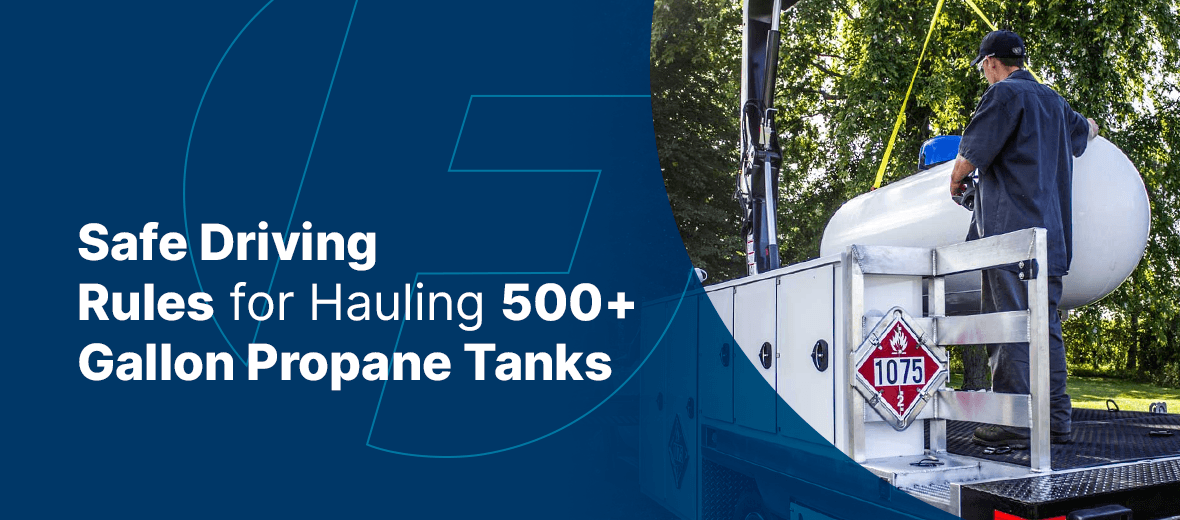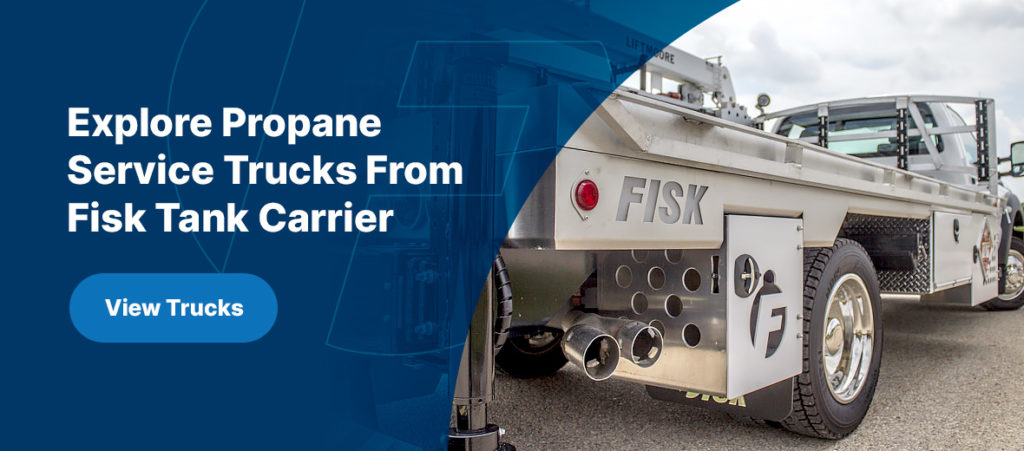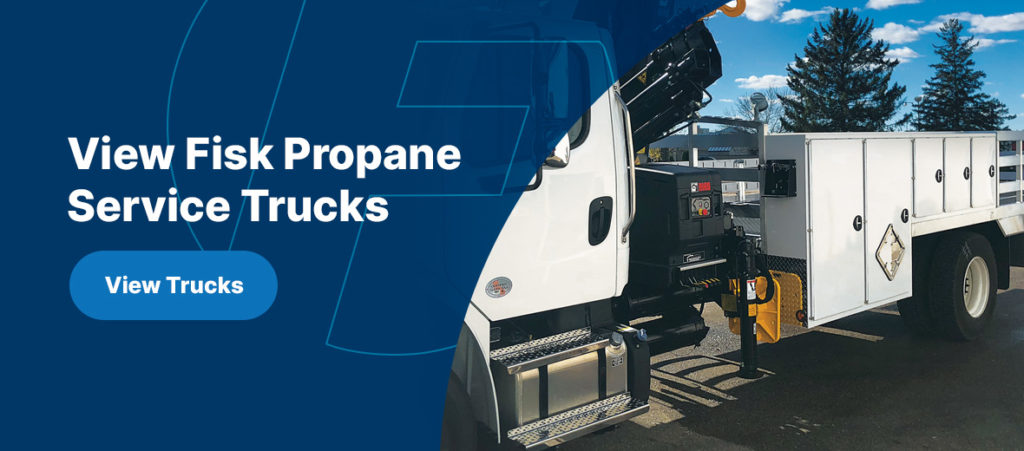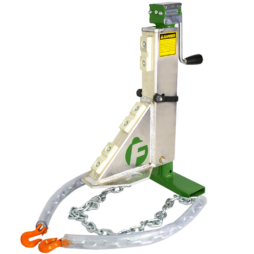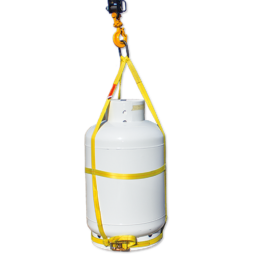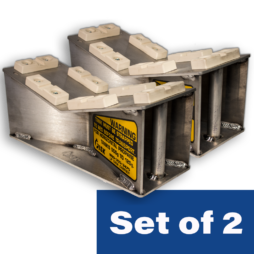Table of Contents
1. Reliable Transportation Services
2. Using Proper Propane Tank Moving Equipment
3. Common Mistakes
4. DOT Regulations on Transporting Propane Tanks
Propane is an essential tool for many functions in our everyday lives. Due to its versatile nature, we use propane for both in-home and outside activities. You might use the colorless gas for your water heater or for heating your stove. Propane also fuels many vehicles, from forklifts and farming vehicles to public buses and police cars.
The regular use of propane requires continuous transportation. To prevent leaks and other problems, drivers need to follow correct transportation procedures. All the different sizes of propane tanks and various state regulations can make abiding by the right transit methods seem difficult. For instance, tanks bigger than 500 gallons require bigger transport options and more careful handling, while a 1,000-gallon propane tank needs even more attention.
Here are some essential safe-driving rules for hauling 500+ gallon propane tanks.
Reliable Propane Transportation Services
One of the best ways to ensure your propane tank is properly transported is using a dependable transport service. It’s best to work alongside a company with experience transporting propane. Every step of the propane transportation process needs to be completed carefully, from loading to delivery.
Here are some features to look for in a reliable transit service:
- Experience: When selecting a transportation service for your propane tanks, look for experienced ones first. Services with years of propane transit experience know the best methods for loading, driving and delivering the tanks. The more experience they have, the less likely leaks and other problems will occur. Make sure to check reviews and ask others for their thoughts on the company.
- High-quality equipment: First-rate equipment is your best bet for ideal transport. It would be best if you had a strong vehicle and the proper loading machinery. Keep in mind that 500-gallon propane tanks need sturdy equipment due to their weight and size. Look for durable aluminum or stainless steel materials to ensure your tanks are well-guarded. Research propane transport equipment and discern what products you prefer. Then, ask potential transport services if they offer those products or anything comparable.
- Accessible: Whether you’re in a rural town or a big city, you need a transportation option that can reach you. Services with multiple locations across the country offer more opportunities for transport. The more accessible the service is, the less you might have to pay in excess travel costs.
- Affordable: The transport cost makes a big impact on your final decision. Make sure to weigh the pros of each option alongside the final price. Opting for a lower price might hurt you more in the long run if the quality reflects the lower rate. At the same time, you don’t want to break your budget. Try to find a balance between quality and cost.
- Timely: One of the most important parts of hauling propane is ensuring it arrives on time. You want to make sure your tanks get to the destination at the right time and that the transit service is timely and efficient. Being punctual shows reliability and makes the entire process smoother.
Avoid companies with any of the following traits:
- Little or no experience with transporting propane
- Nontransparent prices or hidden costs tacked on at the end of the service
- Rude or unkind demeanor
- Poor online or in-person reviews
- Unfamiliarity with propane transport regulations
Remember that the transportation service you choose could mean the difference between a successful transport and tank damage. Use your best judgment to find a trusted propane tank service for your needs.
Using Proper Equipment
Using the correct machinery for transporting propane is vital for safety and quality. You want to transport the gas in a timely and secure way while also abiding by Department of Transportation (DOT) guidelines. The proper equipment safely secures the propane tanks for efficient delivery.
Here are some examples of necessary hauling equipment:
- Propane tank holder and stabilizer: The tank holder and stabilizer is the most trusted propane tank holder. The stabilizer’s design keeps the tank in place during transport with its sturdy structure. It lifts the tank off the ground, preventing any rust formation. It also keeps it from sliding during transit. Stabilizers are available in a variety of styles and materials, but most are compact enough to fit in most vehicles.
- Bungee cords or ropes: In addition to the tank stabilizer, cords and ropes are another layer of protection for propane tanks. Use twine, cords or ropes to secure the tank in a vertical position. Tie the cords around the top and base for the best results. Think of these tie-downs as an additional safety measure.
- Personal protective equipment: When handling propane gas, it’s important to wear protective gear. If a large amount of gas enters the air, it might displace the oxygen in the room and make it harder to breathe. When propane comes into contact with the skin, it can cause frostbite. Because of these risks, you need personal protective equipment like gloves or masks while handling propane. Aprons, long sleeves and rubber gloves are the best options for protection against propane.
- Anchor point: The anchor points in transport are the points where you can securely tie or fasten ropes and other materials. For instance, the corners of a truck bed might work well as anchor points. These points are critical for safe transport because they keep the tanks securely fastened.
- Caddies or lifts: If you can be sure about anything, it’s that 500 or more gallons of propane are heavy. Caddies and lifts are great options to prevent injury or tank damage. Never attempt to lift a tank by yourself. Instead, use lifting mechanisms to get it off the ground and into the transport vehicle. These machines are simple to use and very effective for avoiding injury.
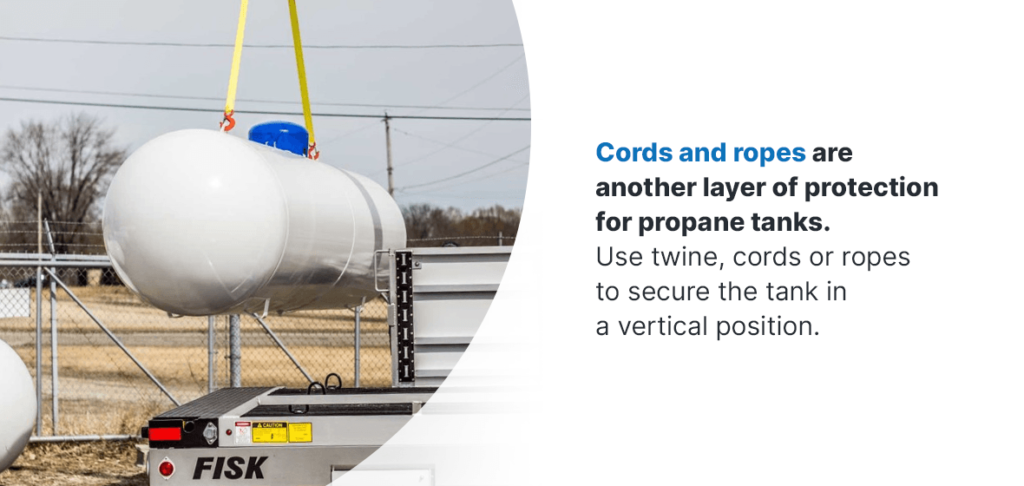
You should also consider the type of vehicle to use for the transport. Propane transport vehicles usually fall into one of two categories:
- Enclosed: These vehicles have enclosed roofs, such as smaller automobiles or SUVs. Enclosed cars might be easier to acquire, but they also have stricter weight limits for transport. There are also more leakage and inhalation risks with transporting propane in a confined space.
- Open trucks or trailers: With these vehicles, the propane tanks travel in the open air, like on a truck bed or open-roof trailer. Because the tanks are exposed to the air, the DOT has more specific restrictions on acceptable amounts of propane. However, you can typically transport much larger amounts of propane in open vehicles.
Both transport options have advantages and disadvantages. It’s good practice to decide how much propane you need to transport first and then choose the best vehicle that accommodates this amount.
Understanding Common Mistakes
One of the best ways to ensure safe propane transportation is to understand what you shouldn’t do. Because propane is potentially hazardous, certain actions could cause dangerous outcomes. Moving propane tanks is a careful process, and mistakes might cause tank damage or injury to transporters.
Here are some common mistakes to avoid while hauling propane:
- Transporting too much: The DOT has specific regulations on tank numbers and weight limits for propane transport, including guidelines for cylinder weight and type of vehicle. Exceeding these limits could damage the transport vehicle or propane tanks.
- Smoking: Smoking around propane tanks is hazardous due to explosion and fire risks. It becomes even more dangerous if in an enclosed space with a tank. Never smoke during transit or while handling the cylinders. Keep the tanks away from any other heated surface to avoid further risk of explosion.
- Placing tanks horizontally: Secure all propane tanks vertically during travel. Setting a tank on its side is dangerous. The cylinder could roll and shift the pressure relief valve, allowing propane to flood the vehicle or surrounding air. Always ensure to secure the tanks upright.
- Using a hot vehicle: Placing propane tanks in an unusually hot or poorly ventilated space is dangerous for passengers. If you use an enclosed vehicle, try cracking the windows to ensure the tanks have proper ventilation. Check the car beforehand to make sure the temperature isn’t too high, and avoid using an open-air vehicle in extreme temperatures.
- Leaving tanks unattended: Avoid leaving propane cylinders alone. This is especially true if your tank isn’t in an upright position. You might miss a leak or crack that, when left unattended, could become dangerous. The best practice is to load your tanks into the vehicle and drive directly to your destination. Move the tanks to the intended space as soon as possible.
- Not checking for leaks: One of the biggest mistakes companies make is failing to check for leaks. While propane vapor isn’t toxic, it still replaces oxygen in the air and irritates the skin. The hazardous materials could also damage the vehicle. Avoid direct contact with the gas as much as possible. Before loading the tanks, look closely for any damages to the tank. If you detect a leak, be sure to either repair it or replace the tank entirely. Contact a professional for the best advice on what to do next.
If you avoid these mistakes, you’re more likely to have successful propane transport. When you work with reliable transport services and take safety precautions, you’re less likely to make any of these mistakes during transport.
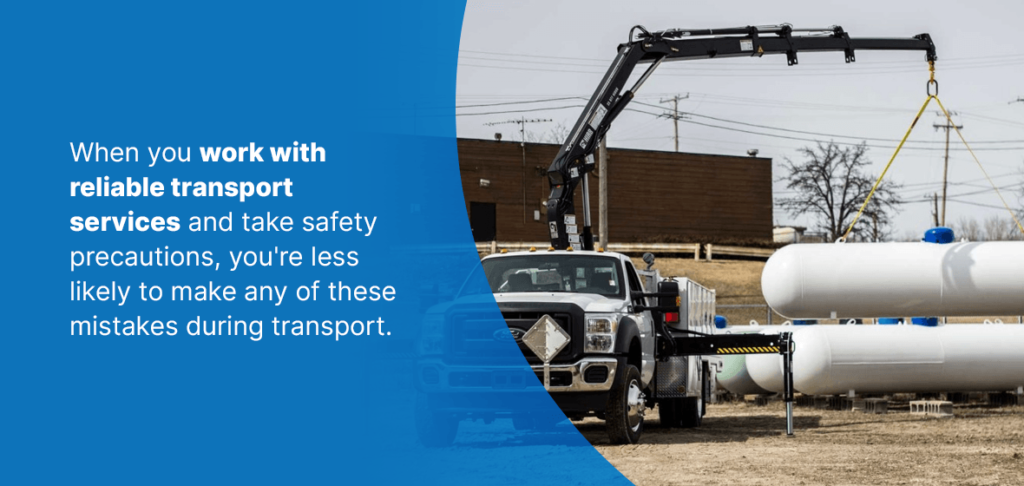
Knowing the Propane Transportation Guidelines
You must follow the DOT’s guidelines for the safest propane transportation. Because the DOT considers propane a hazardous material, they have specific restrictions on how much people can transport at one time. Knowing the protocols for transport keeps the process safe and lawful.
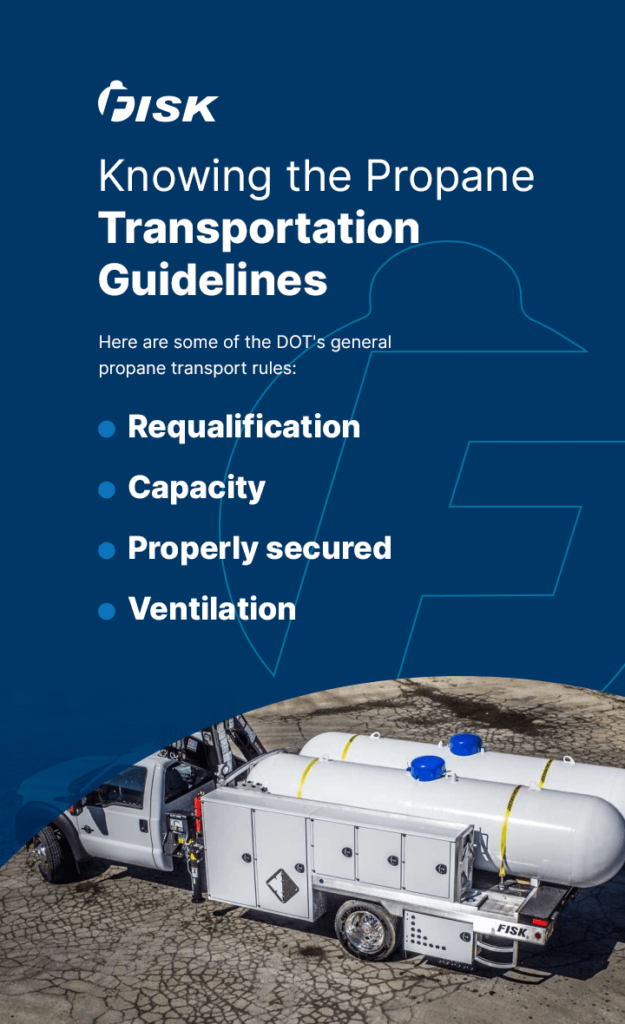
Here are some of the DOT’s general propane transport rules:
- Requalification: According to DOT guidelines, you should requalify propane cylinders after every five or 10 years after their manufacture date. You must also requalify the cylinder for every following 10 years. If you see a crack or obvious damage in the tank, contact a professional for further advice before transporting it. Make sure your propane cylinders are up to date with qualifications before transporting.
- Capacity: The DOT states you can’t fill cylinders by more than 80% of their capacity. The gas needs space to expand in case of warm temperatures. Overfilled tanks are dangerous for transport, so it’s necessary to make sure they don’t contain too much gas. Having a professional fill your tank is the best option for ensuring it’s not overfilled.
- Properly secured: All propane tanks need secure fastenings during transport. You must secure them in an upright position and ensure the tanks have a plug or cap. After the tanks arrive at their destination, store them outside in the upright position.
- Ventilation: The DOT requires cylinders receive adequate ventilation during transport. Good ventilation is easy to achieve in open-air vehicles but harder in enclosed vehicles. Roll the windows down in confined spaces to give the cylinders proper ventilation. If the tank becomes too hot, you risk the chance of an explosive release of propane.
The DOT also has regulations for amounts of propane that you can transport at one time. These rules differ on whether you use an open or enclosed vehicle:
- Enclosed: In enclosed vehicles, you can’t move more than four cylinders at one time. The total weight of propane cannot exceed 90 pounds, but the cylinder weight can’t exceed 45 pounds. This is because of the smaller space available and the risk of poor ventilation for the tanks.
- Open: In open-air vehicles, you can transport up to 1,000 pounds of propane. This capacity suits a 500+ gallon propane tank better due to its large size. Trucks with open beds and other options can typically support much more weight than enclosed vehicles. A 500-gallon tank will most likely fill or exceed this propane capacity.
Before undertaking propane transport, it’s best to fully understand the DOT’s regulations. You must abide by these regulations to keep your trip safe and legal. When in doubt, contact a professional propane transportation service for further advice.
Transport Your Propane Tank With Fisk Propane Service Trucks
At Fisk, we understand the necessity of safe propane transportation. Fisk Tank Carrier provides high-quality service for all your transportation needs. We build custom propane tank service and installation trucks to customize your ideal experience. With over 25 years of experience, Fisk has been a leader in propane tank services. Our personalized customer service and dedicated staff work hard to equip you with the transport you need.
Browse our propane service trucks to find your best fit and request a quote today. Or, if you have any questions, feel free to contact our team. We look forward to hearing from you!
Further Reading
Why Do Propane Prices Fluctuate?
Is the Propane Industry Growing?
How Big Is the Propane Industry?
Advice to Someone Starting a Career in the Propane Industry
